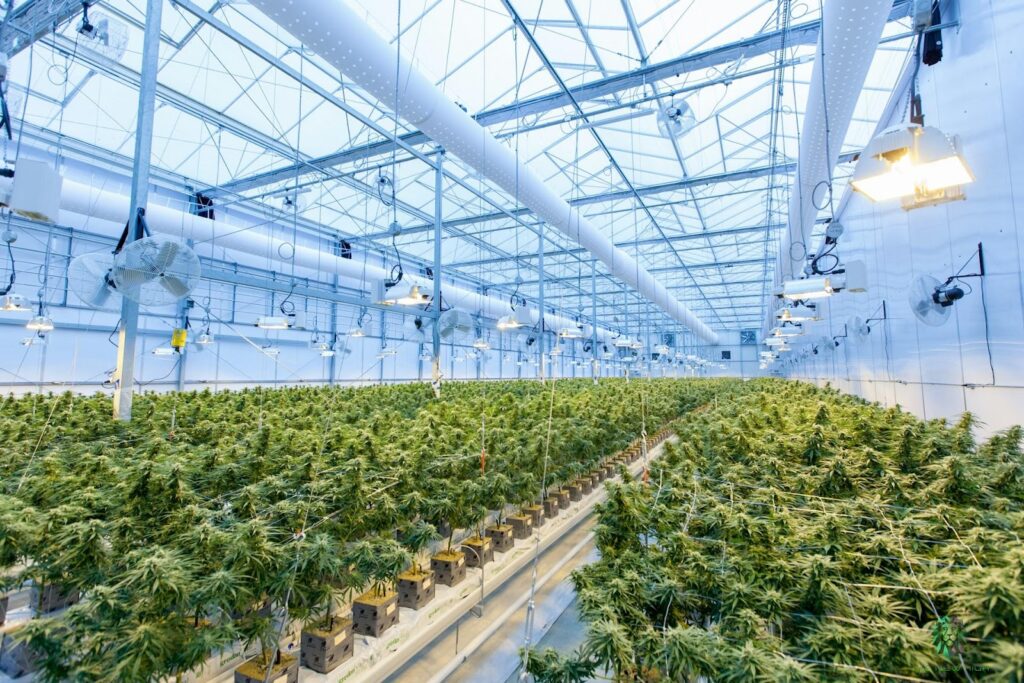Why Polycarbonate Sheets Are the Best Choice for Greenhouse Roofing

When it comes to building or upgrading a greenhouse, selecting the right roofing material is crucial for maximizing the growth potential of plants and ensuring the longevity of the structure. For businesses that rely on efficient, cost-effective, and sustainable greenhouse operations, polycarbonate sheets have become an increasingly popular choice for roofing. In this blog post, we will explore why polycarbonate sheets are the best choice for greenhouse roofing, with a focus on their benefits for businesses.
What are polycarbonate sheets?
Polycarbonate is a highly durable, transparent thermoplastic material that is commonly used in a variety of industries due to its versatility and exceptional properties. Polycarbonate sheets are lightweight, yet incredibly strong, offering a range of advantages over traditional glass or other plastic materials. For greenhouse roofing, polycarbonate sheets are typically available in two main types: solid polycarbonate sheets and twin-wall (or multi-wall) polycarbonate sheets.
The twin-wall sheets, in particular, offer excellent insulation and light diffusion, making them ideal for greenhouse environments where temperature control and optimal light distribution are essential. But what makes polycarbonate sheets the top choice for greenhouse roofing? Let’s delve deeper into the key benefits. Want to learn more about LEXAN polycarbonate sheets? Visit Film-sheet-products.com for more information.
Superior durability and strength
One of the most significant advantages of polycarbonate sheets is their durability. Polycarbonate is up to 200 times stronger than glass, making it virtually unbreakable. In the context of greenhouse roofing, this strength is essential as it ensures the structure can withstand harsh weather conditions such as hail, strong winds, and heavy snow. For businesses investing in a greenhouse, polycarbonate offers long-term protection against potential damage, reducing the costs and hassle of frequent repairs or replacements.
Moreover, polycarbonate sheets are resistant to impact, so they’re unlikely to crack or shatter under pressure, offering a safer environment for both the greenhouse and the workers within it.
Excellent insulation properties
Temperature control is vital in a greenhouse to ensure plants thrive throughout the year. Polycarbonate sheets, particularly the twin-wall and multi-wall varieties, offer superior insulation compared to glass and single-layer plastics. The air pockets between the layers of polycarbonate act as insulators, helping to regulate the internal temperature of the greenhouse.
During colder months, the insulation properties of polycarbonate sheets help retain heat inside the greenhouse, reducing heating costs. In warmer months, polycarbonate sheets also minimize heat buildup by reflecting excess sunlight, thus maintaining an optimal environment for plant growth without the need for additional cooling systems. This energy efficiency is especially valuable for businesses, as it leads to reduced operational costs over time.
Optimal light transmission and diffusion
Polycarbonate sheets are highly transparent, allowing for excellent light transmission. However, they also have the added benefit of diffusing light, which is crucial for plant growth. Unlike glass, which can cause shadows and uneven lighting, polycarbonate sheets provide uniform light distribution throughout the greenhouse. This ensures that all plants receive the right amount of light they need, fostering healthy and even growth.
Moreover, polycarbonate is UV-resistant, preventing harmful ultraviolet rays from entering the greenhouse while still allowing beneficial sunlight to filter through. This not only protects plants from potential sunburn but also helps to extend the life of the roofing material by preventing degradation caused by UV exposure.
Lightweight and easy to handle
Polycarbonate sheets are much lighter than glass, which makes them easier to handle, transport, and install. For businesses, this translates to lower labor and transportation costs. The reduced weight also makes polycarbonate sheets less likely to cause structural strain on the greenhouse framework, allowing for the construction of larger or more complex designs without compromising on safety.
Additionally, polycarbonate sheets are available in large panels, minimizing the need for numerous smaller pieces. This results in fewer seams, reducing the risk of leaks and enhancing the overall structural integrity of the greenhouse.
Cost-effective solution
While polycarbonate sheets may have a higher initial cost compared to other roofing materials, they offer significant savings in the long run due to their durability, energy efficiency, and low maintenance requirements. With their superior insulation properties, businesses can expect reduced energy costs for heating and cooling. Furthermore, the durability of polycarbonate means fewer repairs and replacements, reducing overall maintenance costs.
In addition to energy savings, the long lifespan of polycarbonate roofing (typically 10 to 20 years) provides an excellent return on investment. For businesses operating on tight margins or looking to maximize profitability, polycarbonate sheets represent a cost-effective solution that pays off over time.
Weather resistance and longevity
Polycarbonate sheets are engineered to withstand a variety of weather conditions, including heavy rain, snow, hail, and extreme temperatures. Their UV resistance helps prevent yellowing or degradation, which is common with other materials over time. Polycarbonate roofing maintains its strength, transparency, and insulation properties even under harsh environmental conditions, ensuring that the greenhouse remains functional and efficient for many years.
For businesses in regions with extreme weather, the longevity and resistance of polycarbonate roofing provide peace of mind that the greenhouse structure will remain intact and operational regardless of external challenges.
Sustainability and environmental impact
Polycarbonate is a recyclable material, which adds an environmental benefit for businesses looking to reduce their ecological footprint. By choosing polycarbonate sheets for greenhouse roofing, businesses can contribute to sustainability efforts by selecting a material that is both durable and recyclable. Moreover, the energy efficiency provided by polycarbonate reduces the greenhouse’s carbon footprint, making it a responsible choice for environmentally-conscious operations.


